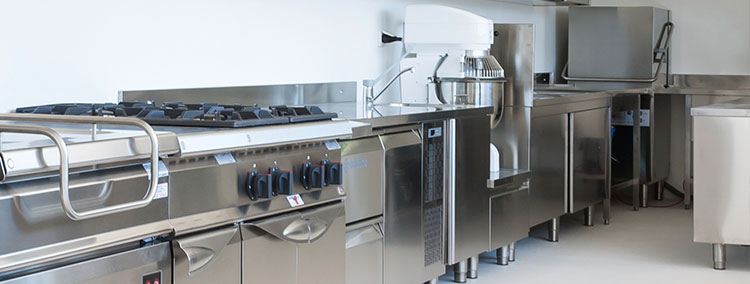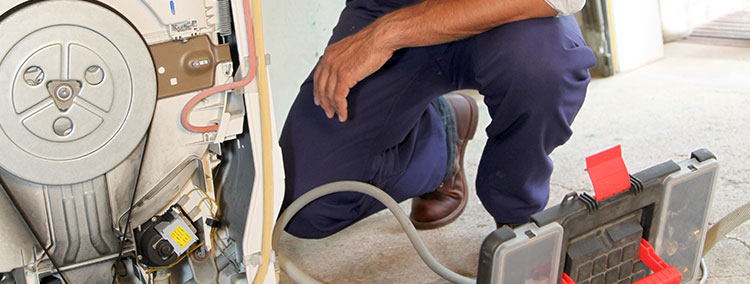Ceramic glass top stoves are sleek, minimalist, and costly but rapidly become discolored with spills and grease. And if they are not properly cleaned, the damage might be permanent. Unlike regular stovetops, these stovetops feature hidden burners that are only visible when heated and become red.
There is no doubting the aesthetic attractiveness of glass top stoves, but they, like luxury cars, must be handled with caution. As a rule of thumb, properly clean the surfaces.
To help you out, here are cooktop best practices to ensure that your surfaces remain as straightforward as possible.
Don’t let the cooktops remain dirty for too long.
A clean glass top stove is lovely, but its flawless appearance rarely lasts long. After use, water stains, oil drips, or dried food globs are always present.
Unfortunately, according to cooktops repair professionals, even little spatters are visible due to the surface’s dark and lustrous appearance. And if you continue to use it without cleaning the surface, the muck will accumulate, heat up, and cool down, making it much more difficult to remove, and the crustiness may leave scratches when you wipe it off.
Leaving food stains on a glass-top stove impacts its cooking performance. Messes like these form barriers on top of the surface, affecting how heat is transported to cooking pots and pans. As a result, your food may cook unevenly.
Grease stains can potentially catch fire if not handled properly. Most people don’t have time to clean a glass top stove right after meals, but try to do it as soon as possible. Being careful about this can help extend the life of the glass top stove, which is expensive to replace.
Always wait for the cooktops to cool down before cleaning them
Glass top stoves feature heat indicators to alert you that they are still hot. You should look out for a little, additional light near the knobs or touchpad. If the light is on, you should avoid touching the cooktop.
Attempting to clean it before the surface has cooled may result in burns and even fires (if you use a cloth or towel). Although we indicated that removing crusted-on food from a glass-topped burner is more difficult, you must still wait until it is safe.
Even if you don’t feel the heat or see the burners ignite through the glass top, the entire surface might be extremely hot.
Unwanted fumes are another reason to hold off. If you apply a cleaning product on a still-hot stove top (hot vinegar smells incredibly unpleasant), the product evaporates and becomes less effective.
If you wish to speed up the cooling process, use a fan or open the window. Do not touch the surface until the indicator light turns off. If yours does not have one, consult the manufacturer’s instructions to determine how long you should wait.
Don’t use abrasive cleaning products.
Don’t use abrasive cleaning products as much as you want to keep your surfaces clean.
Abrasive cleaning products, such as steel wool pads, are effective for cleaning pots and pans but should never be used on a glass-topped stove. This is because glass may be scratched by anything tougher than it, even steel.
Steel wool pads are made of bundled fine metal wires (steel is a type of metal) with abrasive edges, available with or without cleaning chemicals; steel wool is sometimes used instead of sandpaper.
Should you use that to clean your glass-topped stove? It’s not wise to do it.
Don’t throw away your steel wool pads; you can still use them at your sink or workbench. They’re also useful for blocking up openings where mice and other pests try to enter.
Since it is too abrasive, you should avoid steel wool when cleaning stainless steel, plastic, and non-stick coatings. Do yourself a favor and keep those pads and other scouring pads away from the glass-top stove so no one accidentally grabs one.
The same rules apply to scrub brushes and abrasive scrubbing pads. You might think these are ideal for removing cooked-on gunk off glass stovetops, but they can also leave visible scratches.
Use the recommended cleaning products.
Now that you know that glass top stoves cannot accept abrasive cleaning materials and tools, what are your options? A few companies make solutions designed to clean these delicate surfaces, which you may purchase in stores or online.
To be safe, use non-abrasive stovetop cleaning products containing feldspar, quartz, and citric acid. When handling such products, use a cloth and keep your hands away from your eyes.
To use the product, scrape any dried or burnt-on food debris with the scraper before wiping down the surface with a soft towel. Next, apply the cleanser to the scrubbing pad and remove the stains.
Use the product once per month or as needed for the best outcome. You should use a clean, dry cloth instead of a pad to buff the surface to a good shine.
Don’t use a glass cleaner.
Glass cleaning products might be an excellent choice for ceramic glass top stoves and cooktops, but they may contain harsh chemicals and create stains. If you use them too frequently, they may cause permanent discoloration.
Glass cleaners contain surfactants such as lauryl dimethyl amine oxide and 2-phenoxyethanol, as well as isopropanolamine (a solvent), fragrance, and colors. These products could induce discoloration on glass stovetops, so avoid them.
Use vinegar
Vinegar is a well-known cleaning agent, so have a large quantity in your home. In the kitchen, you can use it to clean and disinfect cutting boards, floors, and counters and polish your glass cooktop.
You can use it straight from a spray bottle or diluted with water. You can also mix it with a drop of baking soda or dish soap.
The best way to clean a glass cooktop is to spritz it with a 50/50 vinegar and water solution. Spray it over the surface, then wipe it with a damp microfiber cloth.
Vinegar is acidic, so it dissolves filth and dirt. According to appliance repair Northern VA professionals, using vinegar reduces accumulation, and you have an easy time cleaning the surfaces.

